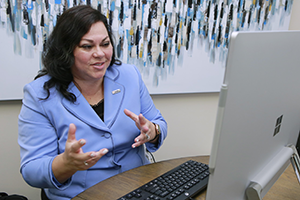4. Make sure your new loan payment fits into your monthly budget.
Set aside some time to understand your student loan's interest rate, principal amount, and type. This knowledge can help to guide your repayment strategies. A debt management tool like Payitoff, available for U.S. Bank clients, can help you find the best strategy for you – this may include considering different types of repayment plans or consolidating your loans.
Keep in mind that your monthly budget must now accommodate these resumed payments, so take a look at your budget and decide whether you need to make any adjustments. This could mean changing your student loan repayment plan, cutting back on non-essential expenses or finding ways to increase your income.
As you’re looking at your budget, see if you can also factor in a monthly contribution to a savings account. Even a small recurring deposit can add up over time and can go a long way to help build up a savings balance that you can tap into in the future.
Though student loan affordability continues to be a hot topic, and additional plans and programs may roll out in the future aimed at helping more student loan borrowers be more able to afford their loan payments, it’s clear that borrowers will be expected to resume their payments this fall. Following the steps outlined here can help to make sure you’re as ready as you can be for this fall’s reinstatement of payments.





















